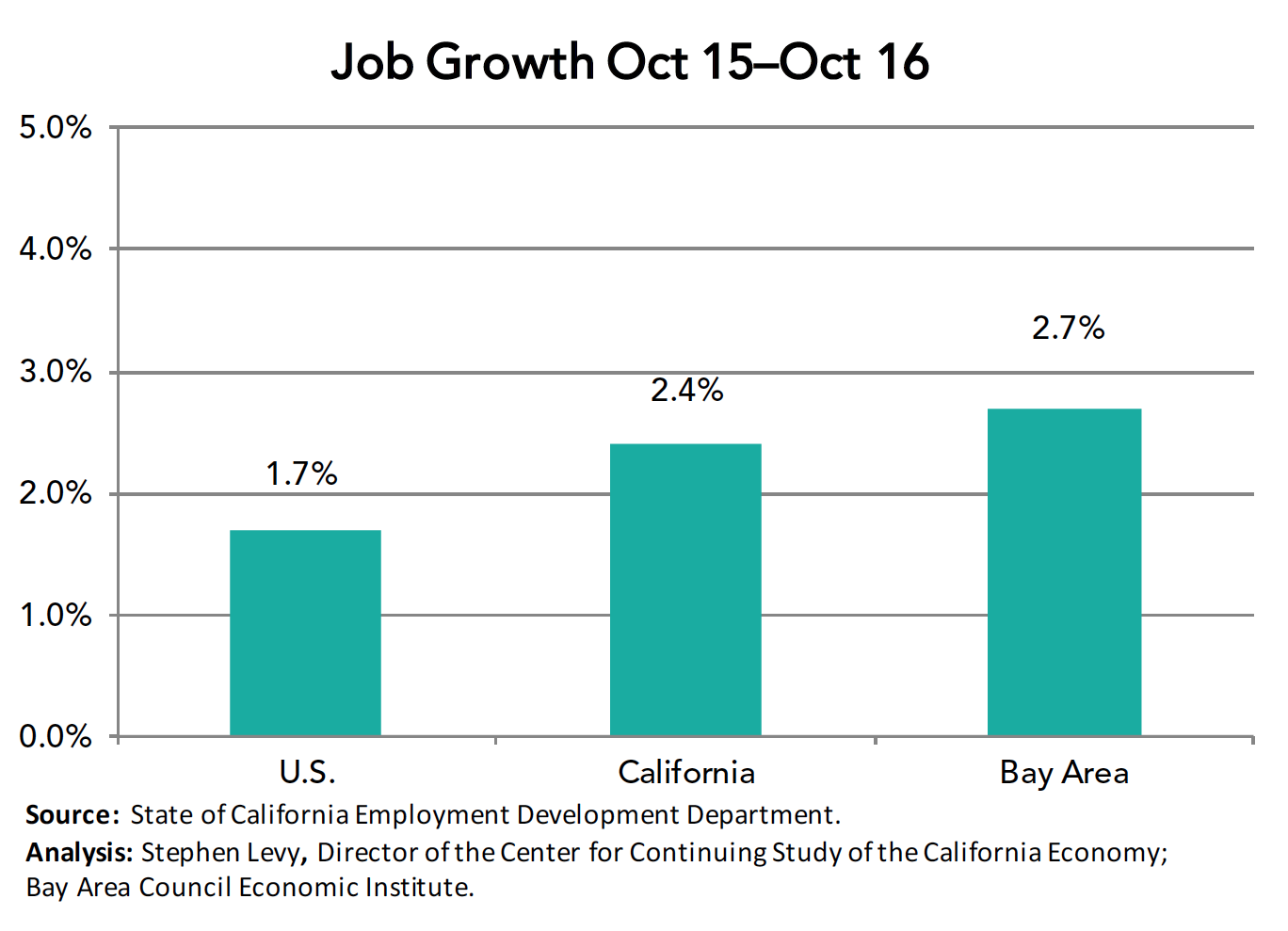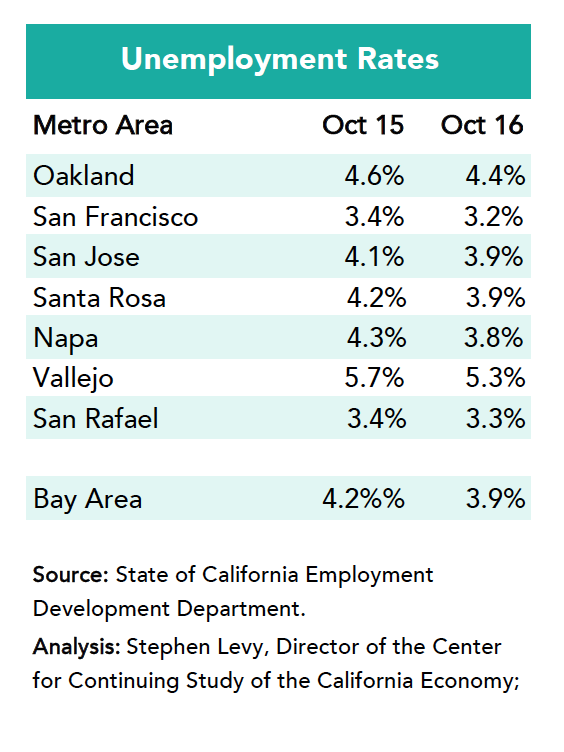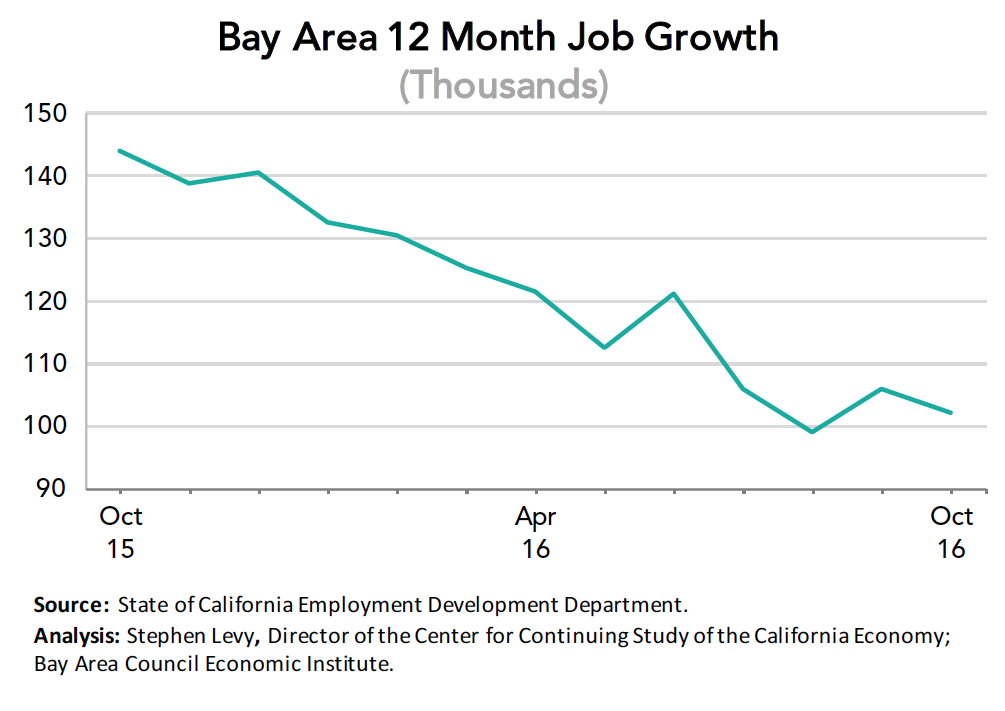
The California Employment Development Department (EDD) has released job and labor force estimates for October 2016. Here are the highlights
Possibly the most impressive statistic in the October report is the continuing strong increase in the region’s labor force. In the past 12 months 116,700 workers have joined the labor force (+2.8%) far outpacing the 1.0% population increase. While monthly labor force participation rate estimates are not available for the region, it must be true from these numbers that the region’s force participation rate has jumped while baby boomer retirements continue to put downward pressure on labor force growth.
This means that economic growth is reaching more people in the region and that is good news. Not everyone is fully participating but the trend is positive and unemployment rates remain low despite fast labor force growth.
Year Over Year Job Growth Strong but Slowing Slightly
The region added 102,000 jobs between October 2015 and 2016 for a gain of 2.7% compared to 1.7% for the nation and 2.4% for California. The pace of growth has slowed from the mid-summer 2015 highs although year over year gains remain robust.
Year over year job growth remains above the national average in all metro areas.

The job gains continue to support low unemployment rates while the labor force continues to add workers although the region is now at or close to full employment.

While year over year job gains have declined from mid 2015 peaks, they remain in very healthy territory with no signs of a significant loss of competitive advantage. Job growth rates in 2016 are likely to be the peak going forward as baby boomer retirements are slowing labor force growth.

The continuing job growth now that unemployment rates have fallen will bring new residents to the region as will the growing need to replace retiring workers.
All of these trends underscore the importance of policies to increase housing and make sure that housing and transportation challenges do not undermine the region’s still vibrant economic competitiveness. Bay Area residents approved many funding measures for transportation and several local measures give hope that the housing supply and affordability challenges are being increasingly recognized by residents.
The national election results have implications for the state and regional economy that will be explored by the Bay Area Council Economic Institute in future months.
Some of the obvious areas of concern are the negative impacts that restricting trade and immigration will have on an innovation economy.